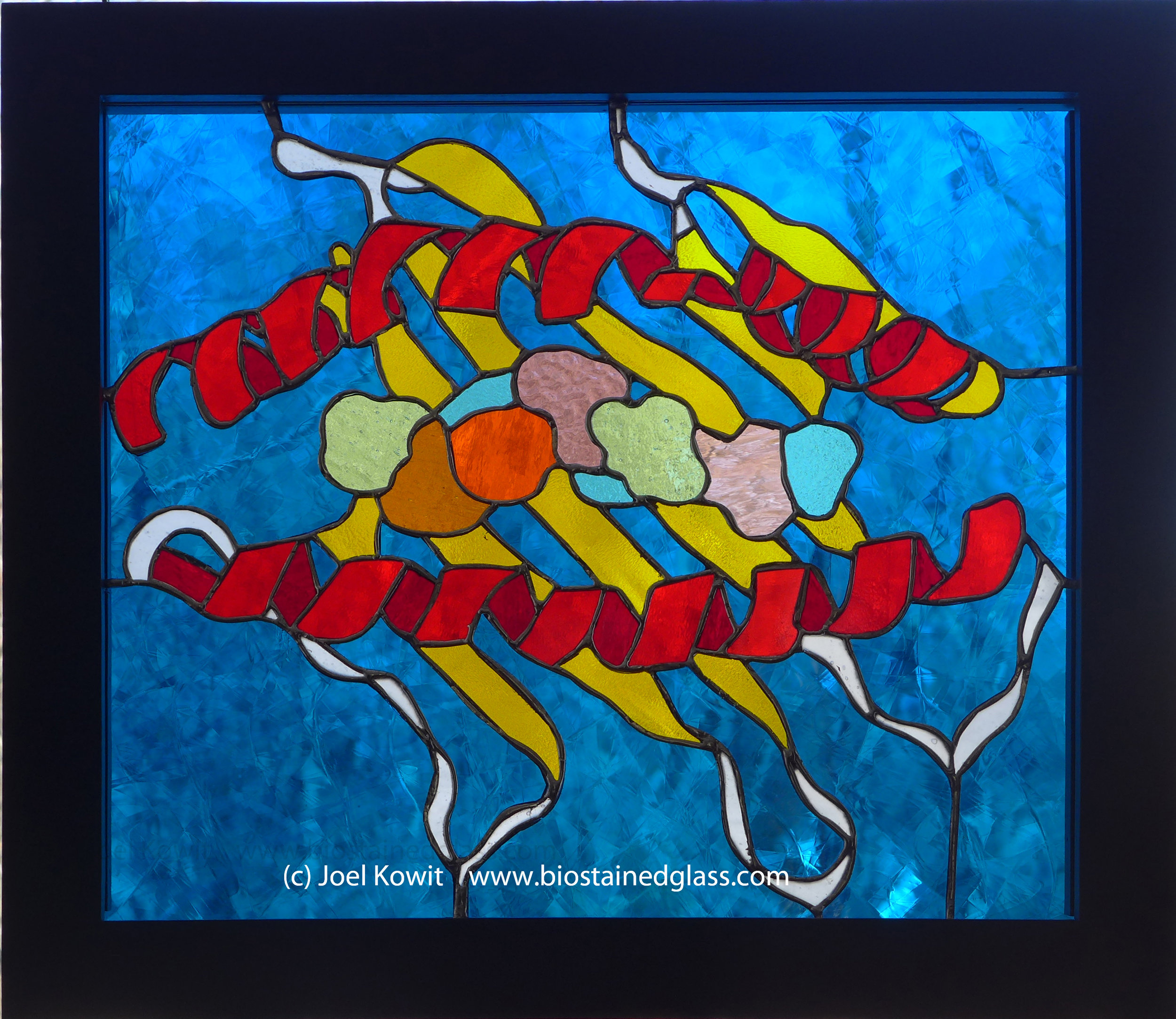Recognition (MHC I protein with viral peptide)
2015
Stained glass
18" h x 20" w
Recognition is a hallmark of all life forms, from single celled organism, to the human species, to populations. We can pick out a friend in a crowd of hundreds, through recognition of form and movement. In this work, a human protein shown as a ribbon holds a short piece of a virus in a groove between two (red) helices. White blood cells known as T lymphocytes, "read" these short pieces, recognize them as foreign (viral, bacterial). and mount an immune attack on the virus.
Scientific Background:
MHC class I with peptide [1ao7.pdb; HLA-A2 with HTLV peptide] presenting a short piece of an HTLV virus for T lymphocyte recognition.
Protein structures are stored in a national data bank as .pdb files. This work shows a human MHC I (major histocompatibility complex, class I) protein in ribbon model. MHC proteins are fundamental to the immune system. They capture small portions of viral or bacterial proteins in an infection, and hold these short pieces in a groove formed by two outer helices and a sheet-like floor. White blood cells known as T lymphocytes, "read" these short pieces and can recognize if they are foreign (e.t., viral, bacterial). If so, the T cells mount an immune response against the infecting pathogen. Studies on the role of MHC proteins led to the Nobel Prize in Medicine or Physiology for Benacerraf, Dausset, and Snell in 1980.
